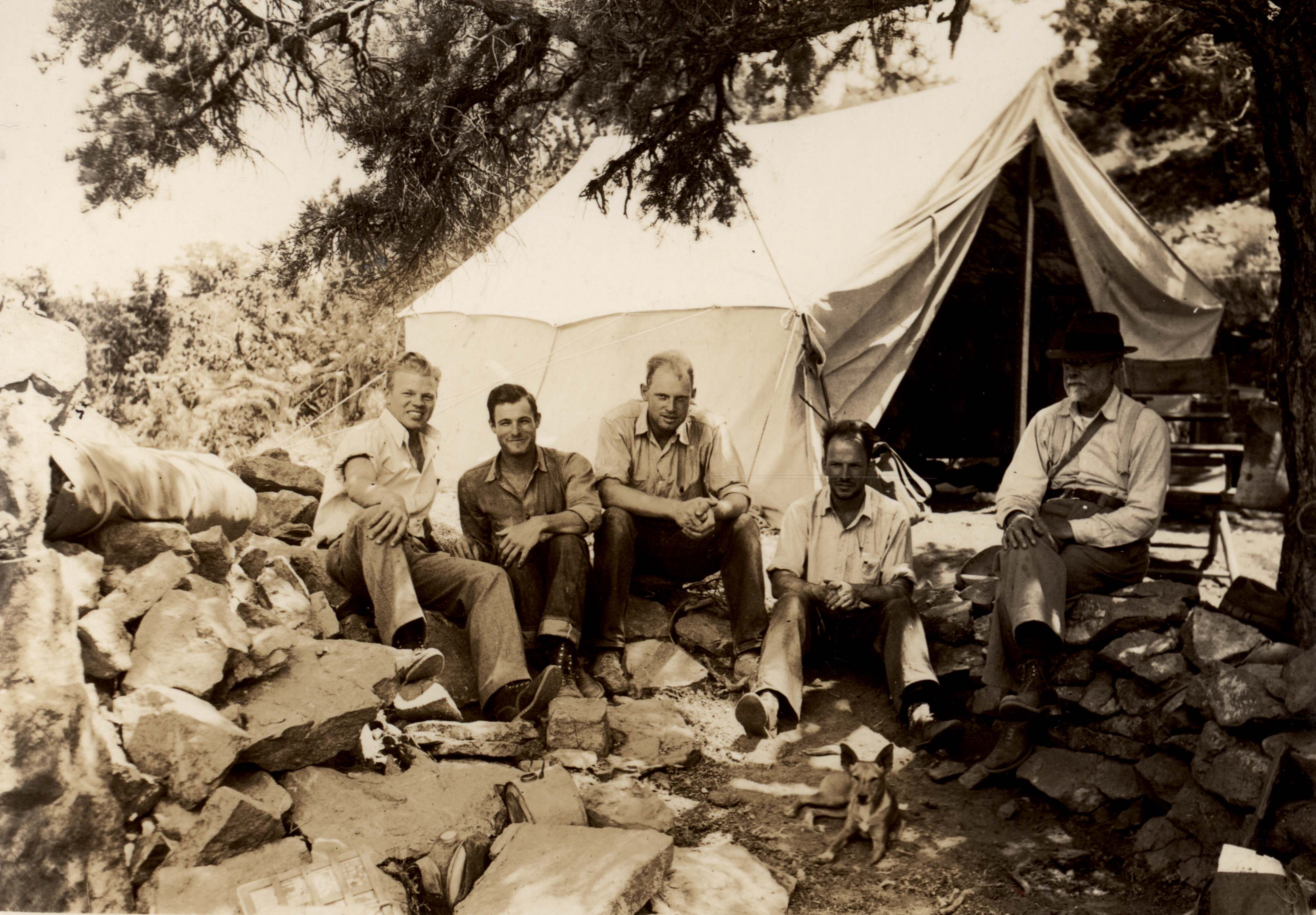
Elmer Aldrich with a cowbird and a cottontail. Cedar Canyon, Providence Mountains, San Bernardino County, California. May 22, 1938.
Elmer Clare Aldrich (1914 – 2010), an MVZ graduate student under the tutelage of Joseph Grinnell from 1935 to 1938, devoted his life to the study and conservation of nature. After earning a Bachelor of Arts and a Master of Arts in Biological Sciences from U.C. Berkeley, Aldrich became a longtime employee of the California State Parks and Recreation Department. He belonged to numerous environmental groups, including the Audubon Society, the Sierra Club, and the Save the American River Association, and he continued to work as an environmental consultant after his retirement from state service in 1972. A resident of Sacramento since the end of World War II, Aldrich envisioned a park system for the Sacramento region and championed the American River Parkway, now a twenty-three mile stretch of parkway that runs along the American River throughout Sacramento County.
As a result of Aldrich’s status as a valued and longtime member of the MVZ community, the Museum developed a display for Cal Day last year to honor his time at the MVZ. The display featured the following wonderful recollection of Aldrich’s first trip into the field with Grinnell (a trip to the Providence Mountains in San Bernardino County, California). Aldrich originally recounted the story at the 2008 Centennial Fall Symposium.
……………………………………………………………………………………………………………………………………..
A Chance Encounter
In May of 1938, Aldrich was excited to go on his first field trip with the famous biologist Joseph Grinnell. Grinnell was a serious man and Aldrich was determined to make a good impression.
On the morning of the first day of the expedition, they gathered in camp. Over their coffee, Grinnell stressed the importance of collecting, and in particular gathering new samples. He really wanted a Crotalus mitchelli collected from the area, which would be a new species added to the museum. Although Aldrich was more of a bird collector, he was eager to impress Grinnell by collecting a speckled rattlesnake.

From left to right: Elmer Aldrich, Dale Avery, Dave Johnson, Tom Rodgers, and Joseph Grinnell. Cedar Canyon, Providence Mountains, San Bernardino County, California. June 1, 1938.
Aldrich went out and had an excellent day, collecting many species for the museum, all the while keeping an eye out for rattlesnakes. He didn’t see a single one! At the end of the day, he was hurrying back down to camp, jumping from rock to rock down a steep hillside. Suddenly, mid-step, he heard the telltale buzz of a rattlesnake. He lowered his gaze and directly beneath him lay a Crotalus mitchelli!
Aldrich had his shotgun with him, as this was the typical way to collect birds. With the gun on his back and the barrel to the sky, careful not to insight a strike from the rattler, he slowly pulled the gun over his shoulder so it was nose to nose with the snake. And after one squeeze of the trigger, the snake was his to take back to Grinnell.
He rushed back in a flurry, excited to share his success with the group. When he got to camp, he happily pulled out the rattlesnake to show to Grinnell. To his surprise, Grinnell answered with anger, exclaiming, “you shot the head off, you fool!” Aldrich was crushed. Grinnell was furious and explained that many important identifying characteristics on snakes are on the head. On expeditions, shooting a rattlesnake at point blank range is not the best way to collect data.
Apparently this experience made a great impression on Aldrich. He recounted the tale to his friends and family with fondness and a chuckle. Later, when on family picnics, he’d often scout for rattlesnakes under every boulder. He also was known to tell stories of “Matilda the Rattlesnake” to his children, an invented character that saved wildlife and spouted John Muir quotes.
……………………………………………………………………………………………………………………………………..
In addition to his field notes, the MVZ Archives maintains a collection of Aldrich’s personal and professional papers. For more details, please visit the collection’s record on the Online Archive of California.

Thanks, Kira for the write up. Affectionately done! I am going to send this to his daughter who had donated his papers when he passed. She will like to see this! MK